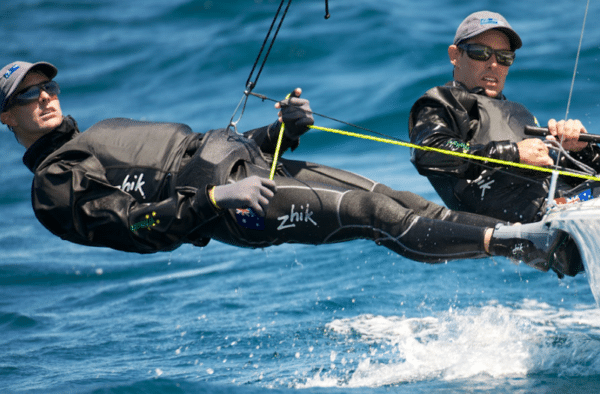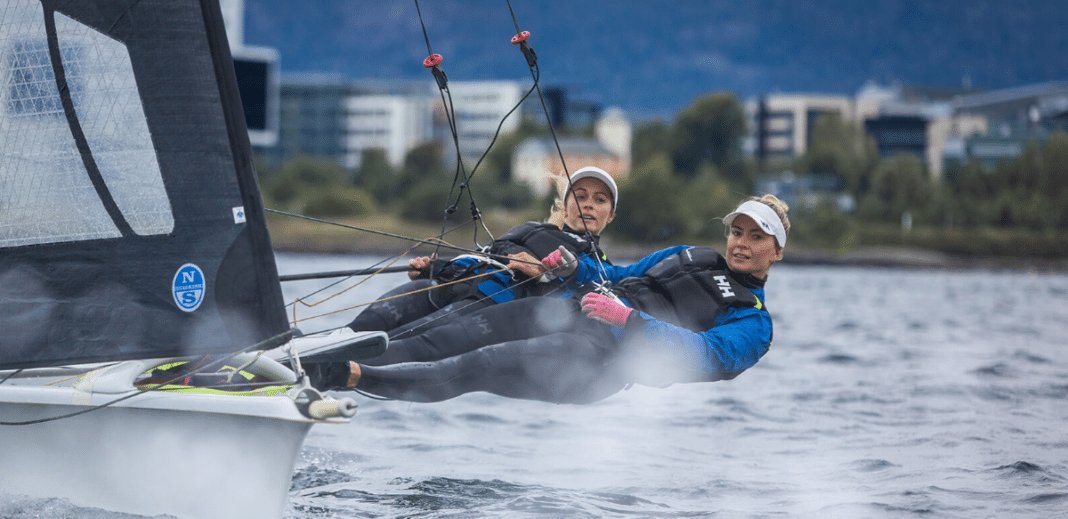A sailing wetsuit is one of the most important pieces of gear for any sailing enthusiast. By maintaining a small layer of water next to your skin, wetsuits establish a thermal barrier that keeps you warm and comfortable while sailing in cold or chilly water. But even when the weather is pleasant, it’s important to wear something to keep your core warm, because body heat can quickly escape when submerged in cool water.
In addition to maintaining your body temperature, the extra layer will help to shield you from cuts, bruises, wind chill, and harmful UV radiation. Wetsuits are often made of insulating neoprene, which features air bubbles that retain warm air. You will also feel a little more buoyant thanks to these air bubbles.
Sailors now have plenty of options to choose from thanks to brands like Zhik, Magic Marine, Gill, and others. Although more options is always a good thing, it can also make it challenging to know which one is right for you. To make the right choice, here’s what to consider when shopping.
Thickness

It’s a common question among those shopping for sailing wetsuits: “What thickness of wetsuit do I need for sailing?” Well, the water temperature where you’ll be sailing will dictate the thickness of the suit you should use. As previously mentoned, neoprene, which comes in a variety of thicknesses, is typically used to make various pieces of sailing equipment. The thicker the neoprene, the warmer you’ll feel.
The thickness of the neoprene can be found on the product’s description. There you’ll find one, two, or three numbers. When a piece has a single number, such as 2 mm, it means that a single neoprene thickness was used throughout. A suit with two numbers (for instance, 4/3) has two different neoprene thicknesses.
The thinner material is used for the arms and legs to allow for mobility, while the thicker material surrounds the core to provide warmth and buoyancy. Even three or more different thicknesses are used in some wetsuits.
Different temperature guides are available, and factors like air temperature, wind, personal preference, and the length of your sailing can affect the thickness of the piece that is best for you. Here is a general guideline to follow:
Size
A piece that’s the appropriate size will feel like second skin. Make sure that there isn’t any severe arm or leg bunching or back sagging. Just a thin layer of water should be able to pass between the suit and your body if it fits snugly enough.
A loose piece will be less effective since a lot of water will flush through it. Not only that, but a poorly fitting wetsuit may also limit your mobility.
Use the size guide of the product you’re considering to find your ideal size. Once you’ve decided on a model, compare your measurements to the size chart. Keep in mind that not every brand uses the same sizes.
Always try the suit before buying or if shopping online, as soon as it arrives. You should be able to easily squat down and touch your toes and have full range of motion in your arms and shoulders. You don’t want any portions of your suit to be too loose, either, as this will enable cold water to keep flushing through it.
Entry System

The entry system depends on the type of zip present on the suit. Because zips are rigid and do not stretch, they affect how easy it is to put on and take off a wetsuit and how flexible the upper body is.
The optimum zip style for you will mostly rely on how much flexibility you want across your shoulders while balancing durability. Also, think about whether you find this style easy to put on or not. While recreational sailors and novices may favour durability, professional athletes will need the maximum amount of flexibility possible to push themselves to the limit.
Some of the available styles include Back Zip, Chest Zip, and Zip-Free, with Back Zip being the most popular. It’s a typical zip-on suit with a long tag that runs right down the back so you can put it on and take it off without a friend being around.
The key advantage of the Back Zip models is that they’re the simplest to put on and take off. However, they may not stretch as well over your shoulders and back, where you often need more flexibility, because they have the longest type of zip.
Type of Seams

Seams play a much more important role than simply holding your wetsuit together. It can also lead to leaks as stitching means making tiny holes in the material. Seams can also impact flexibility as more seams often lead to a better-fitting wetsuit.
The most common types of seams you’ll find in wetsuits are:
- Flatlock Seams: Cheaper wetsuits usually have flatlock seams. Despite not being completely waterproof, they go well with wetsuits and other warmer-water-specific neoprene accessories. Flatlock seams can be recognised by the criss-cross stitching that is visible on both the inside and outside of the seam.
- Glued and Blind Stitched Seam: A common type of seam found on cold water suits. Neoprene panels are edge-to-edge glued before being stitched with loops that don’t reach the outer face completely. The stitching inside is typically taped to the backing. Since there are no through-holes, the neoprene’s inherent waterproofness is maintained, greatly enhancing warmth.
- Fluid-Seam Welds: Featured on high-quality, expensive wetsuits. It ensures excellent warmth, waterproofness, and comfort due to the airtight, extremely low-profile nature of welded seams.






